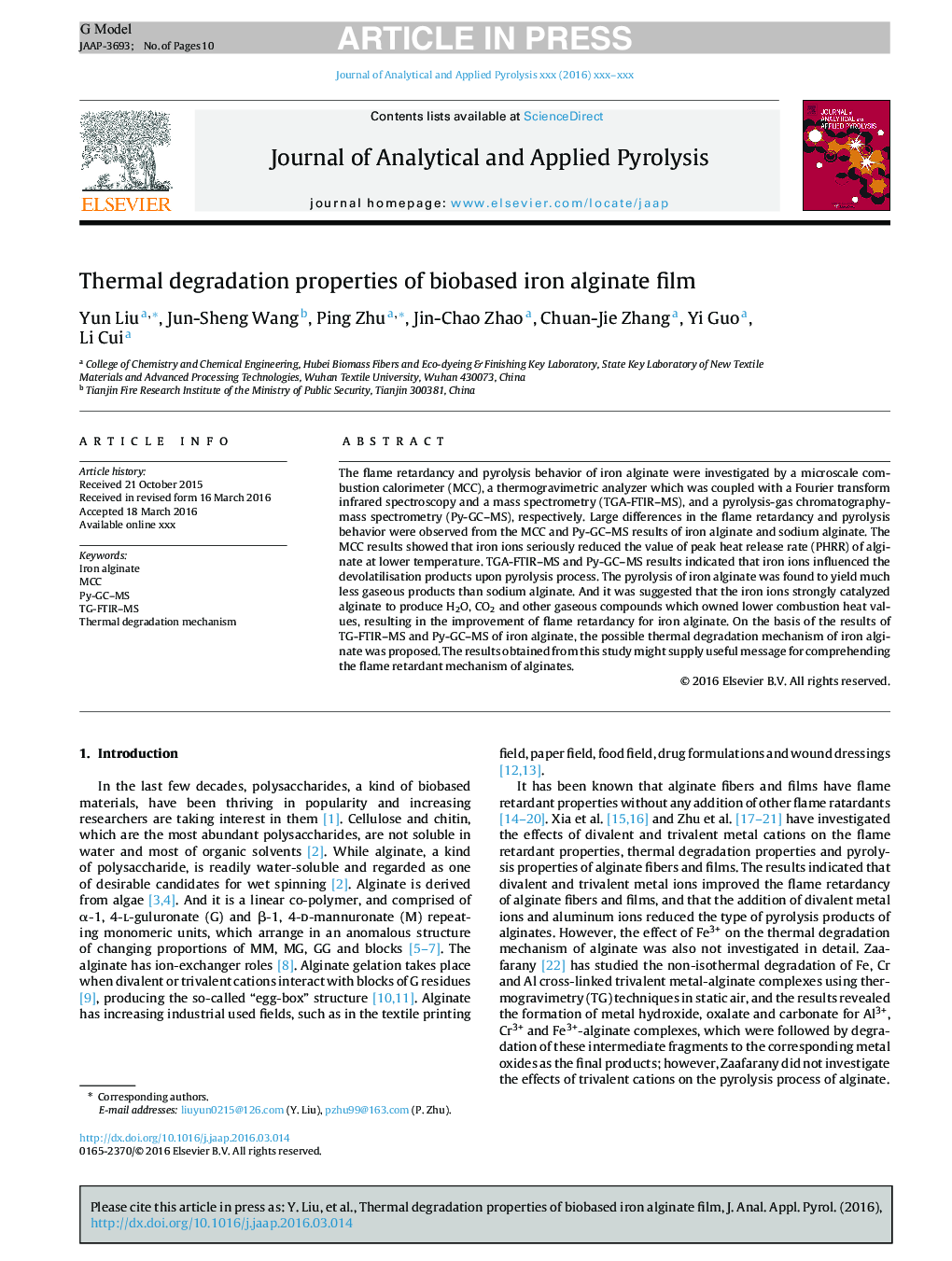| Article ID | Journal | Published Year | Pages | File Type |
|---|---|---|---|---|
| 7606575 | Journal of Analytical and Applied Pyrolysis | 2016 | 10 Pages |
Abstract
The flame retardancy and pyrolysis behavior of iron alginate were investigated by a microscale combustion calorimeter (MCC), a thermogravimetric analyzer which was coupled with a Fourier transform infrared spectroscopy and a mass spectrometry (TGA-FTIR-MS), and a pyrolysis-gas chromatography-mass spectrometry (Py-GC-MS), respectively. Large differences in the flame retardancy and pyrolysis behavior were observed from the MCC and Py-GC-MS results of iron alginate and sodium alginate. The MCC results showed that iron ions seriously reduced the value of peak heat release rate (PHRR) of alginate at lower temperature. TGA-FTIR-MS and Py-GC-MS results indicated that iron ions influenced the devolatilisation products upon pyrolysis process. The pyrolysis of iron alginate was found to yield much less gaseous products than sodium alginate. And it was suggested that the iron ions strongly catalyzed alginate to produce H2O, CO2 and other gaseous compounds which owned lower combustion heat values, resulting in the improvement of flame retardancy for iron alginate. On the basis of the results of TG-FTIR-MS and Py-GC-MS of iron alginate, the possible thermal degradation mechanism of iron alginate was proposed. The results obtained from this study might supply useful message for comprehending the flame retardant mechanism of alginates.
Related Topics
Physical Sciences and Engineering
Chemistry
Analytical Chemistry
Authors
Yun Liu, Jun-Sheng Wang, Ping Zhu, Jin-Chao Zhao, Chuan-Jie Zhang, Yi Guo, Li Cui,
